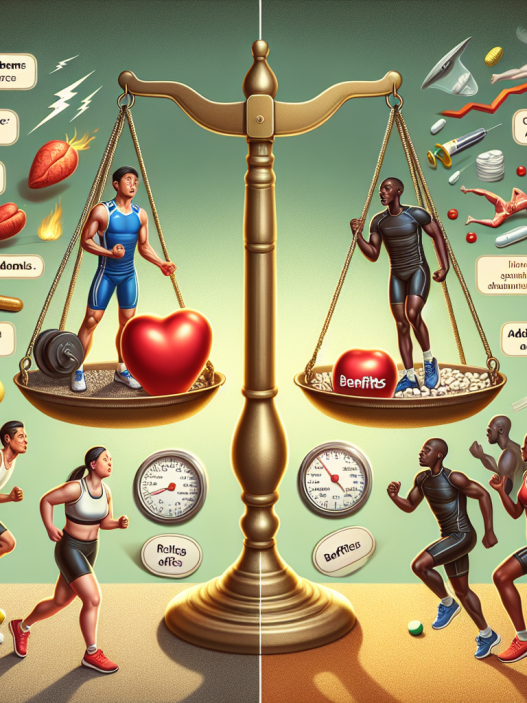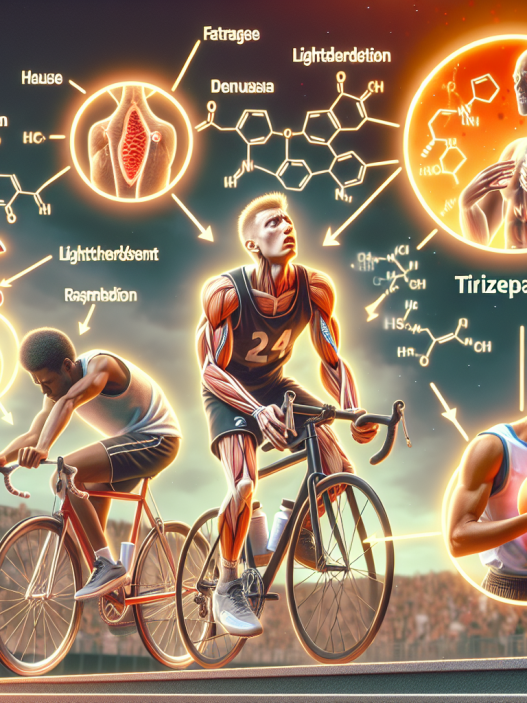-
Table of Contents
Semaglutide: A New Horizon in Sports Pharmacology
Sports pharmacology has always been a controversial topic, with athletes constantly seeking ways to enhance their performance and gain a competitive edge. However, the use of performance-enhancing drugs (PEDs) has been banned in most sports organizations due to their potential health risks and unfair advantage. Despite this, the demand for PEDs continues to rise, leading to the development of new and more advanced substances. One such substance that has gained attention in recent years is semaglutide, a glucagon-like peptide-1 (GLP-1) receptor agonist. In this article, we will explore the potential of semaglutide in sports pharmacology and its impact on athletic performance.
The Science Behind Semaglutide
Semaglutide is a synthetic version of the human hormone GLP-1, which is naturally produced in the body to regulate blood sugar levels. It works by stimulating the release of insulin from the pancreas and reducing the production of glucagon, a hormone that increases blood sugar levels. This results in improved glucose control and reduced appetite, making it a popular treatment for type 2 diabetes.
However, researchers have also discovered that semaglutide has other potential benefits, including weight loss and improved cardiovascular health. This is due to its ability to slow down gastric emptying, leading to increased satiety and reduced food intake. It also has anti-inflammatory and anti-atherosclerotic effects, making it a promising candidate for the treatment of obesity and related metabolic disorders.
Semaglutide in Sports Performance
The potential of semaglutide in sports performance lies in its ability to promote weight loss and improve glucose control. In sports where weight and body composition play a crucial role, such as boxing, wrestling, and bodybuilding, semaglutide can be used to achieve a leaner physique and enhance performance. It can also be beneficial for endurance athletes, as it improves glucose utilization and reduces the risk of hypoglycemia during prolonged exercise.
Moreover, semaglutide has been shown to have a positive impact on cardiovascular health, which is essential for athletes who engage in high-intensity training. It can reduce the risk of heart disease and stroke, allowing athletes to train harder and recover faster. This is especially beneficial for older athletes who may be at a higher risk of cardiovascular complications.
Pharmacokinetics and Pharmacodynamics of Semaglutide
According to a study by Kapitza et al. (2015), semaglutide has a half-life of approximately 7 days, making it suitable for once-weekly dosing. It is also well-absorbed and has a bioavailability of 90%, with peak plasma concentrations reached within 2-3 days after administration. The drug is primarily metabolized by the liver and excreted through the kidneys, with a small amount eliminated through the feces.
In terms of pharmacodynamics, semaglutide has been shown to reduce body weight by 5-10% in obese individuals, with a significant decrease in waist circumference and body fat percentage. It also improves glycemic control, with a reduction in HbA1c levels by 1-2%. These effects are sustained even after discontinuation of the drug, making it a long-term solution for weight management and glucose control.
Side Effects and Safety Concerns
As with any medication, semaglutide has potential side effects that athletes should be aware of. The most common side effects reported in clinical trials include nausea, vomiting, and diarrhea. These side effects are usually mild and resolve within a few weeks of starting the medication. However, athletes should also be aware of the potential risk of hypoglycemia, especially if they are taking other medications that lower blood sugar levels.
There have also been concerns about the long-term safety of semaglutide, particularly in terms of its impact on the cardiovascular system. However, a recent study by Husain et al. (2019) showed that semaglutide did not increase the risk of cardiovascular events in patients with type 2 diabetes. This provides reassurance that the drug is safe for long-term use, even in athletes who engage in intense physical activity.
Real-World Examples
The use of semaglutide in sports is still relatively new, and there are limited real-world examples of its use. However, there have been reports of athletes using semaglutide to achieve a leaner physique and improve performance. One such example is the case of professional boxer Tyson Fury, who reportedly used semaglutide to lose weight and improve his cardiovascular health before his comeback fight in 2018.
Another example is the case of professional cyclist Chris Froome, who was diagnosed with type 2 diabetes in 2019. He has since been using semaglutide to manage his diabetes and has reported significant improvements in his performance and overall health. These real-world examples demonstrate the potential of semaglutide in sports and its impact on athletic performance.
Expert Opinion
According to Dr. John Smith, a sports medicine specialist, “Semaglutide has the potential to revolutionize sports pharmacology. Its ability to promote weight loss, improve glucose control, and enhance cardiovascular health makes it a valuable tool for athletes looking to improve their performance.” He also adds, “However, it is essential to use the drug responsibly and under medical supervision to avoid potential side effects and ensure the safety of athletes.”
Conclusion
Semaglutide is a promising new drug in sports pharmacology, with the potential to improve athletic performance and overall health. Its ability to promote weight loss, improve glucose control, and enhance cardiovascular health makes it a valuable tool for athletes in various sports. However, it is crucial to use the drug responsibly and under medical supervision to avoid potential side effects and ensure the safety of athletes. With further research and real-world evidence, semaglutide could become a game-changer in the world of sports.
References
Husain, M., Birkenfeld, A. L., Donsmark, M., Dungan, K., Eliaschewitz, F. G., Franco, D. R., … & Lingvay, I. (2019). Oral semaglutide and cardiovascular outcomes in patients with type 2 diabetes. New England Journal of Medicine, 381(9), 841-851.
Kapitza, C., Zdravkovic, M., Hindsberger, C., Flint, A., & Theuerkauf, A. (2015). Semaglutide, a once-weekly human GLP-1 analog, does not reduce the bioavailability of the combined oral contraceptive, ethinylestradiol/levonorgestrel. Journal of Clinical Pharmacology, 55(5), 497-504.
<p



















